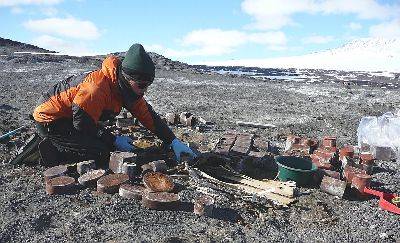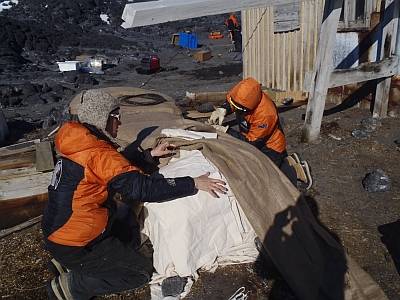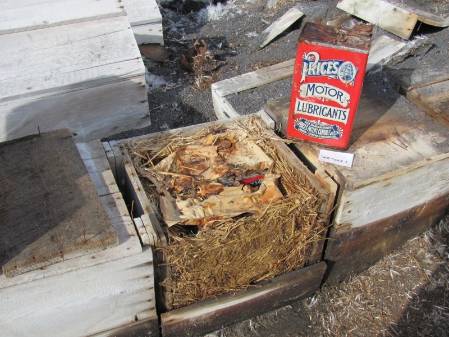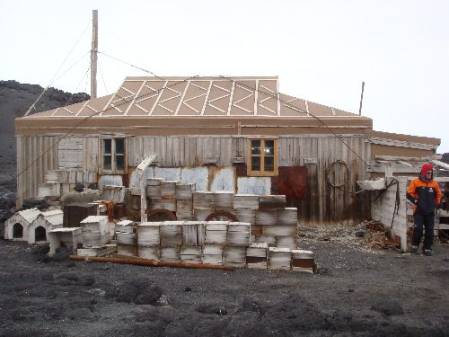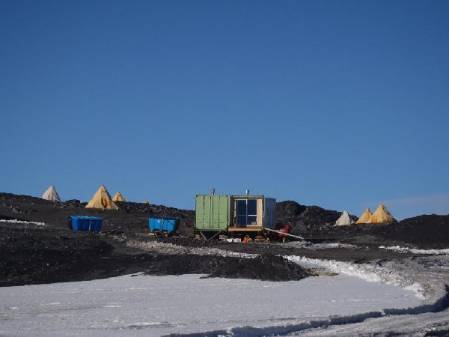Posted by Lizzie
Date: 23 December 2010
Temperature: -2.5C
Wind Speed: 4 Knots, North-East
Temp with wind chill: -3.3C
Sunrise: 24 hour daylight
Sunset
This season at Cape Royds, much of our work has revolved around the historic wood and ply cases of food used on Shackleton’s 1907-08 expedition. With the Nimrod moored at the foot of the cliffs, the heavy wooden boxes, sacks of coal and bales of fodder were hoisted up to the cliff-top plateau using a derrick, and the vast majority of the some 2000 boxes were moved down to the hut.
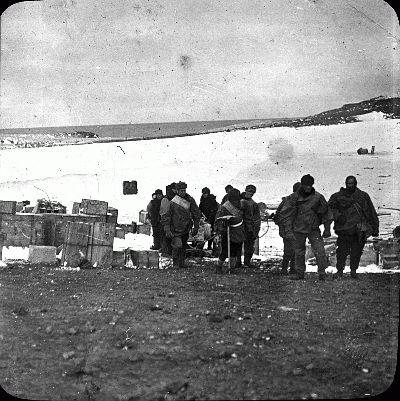
Shackleton’s team man-hauling food stores © Canterbuy Museum 1981_110_30
Previous posts have mentioned the high risk of fire in Antarctica, with conditions being so dry, and water not being widely available. Shackleton and his team were well aware of the risk and took the extra precaution of staging a cache of food supplies up on the plateau above the hut. Over the last hundred years, the cache of boxes and tins has gradually corroded, eroded, become buried by scoria, tins have been blown hundreds of metres down the coast by the wind and at times been carried off by skua for lunch.
This season, to remove temptation from the skua, and to prevent contamination of the local environment, the food cache was excavated, documented, and then re-housed in boxes at the cache site.



